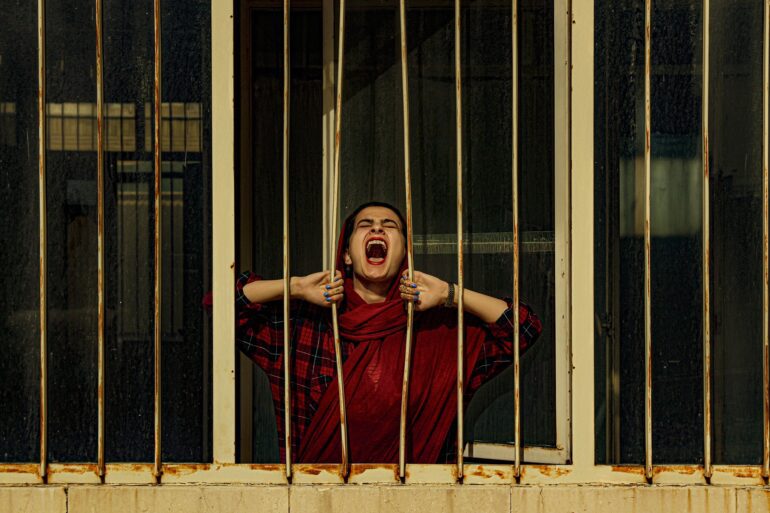TL;DR:
- Iran uses AI to strengthen state surveillance and suppress perceived offenses.
- Surveillance technologies include cameras to identify women not wearing hijab, facial recognition, and AI.
- Recent protests triggered by the death of a woman allegedly breaching hijab laws
- Iranian authorities respond with increased surveillance, including using AI to detect women who defy the hijab law.
- Concerns about the potential for increased profiling, misidentification, and invasion of privacy with the use of AI
- The Iranian regime is investing heavily in AI technology to better police digital platforms and prevent access to blocked foreign platforms.
Main AI News:
Iran is one of the countries that have embraced the power of artificial intelligence (AI) to strengthen its state surveillance networks. The use of AI technology has enabled the Iranian regime to further suppress and crack down on perceived offenses. Experts believe that the regime is exploiting technological advances to redefine and modernize its modes of suppression.
“The Iran regime is certainly joining rogue leaders of the world in redefining and modernizing their modes of suppression,” Lisa Daftari, a Middle East expert and editor-in-chief of The Foreign Desk, told Fox News Digital. “Unfortunately, just as the Iranian people are finding innovative ways of using social media, streaming, and VPNs to get their message out, the regime is also taking advantage of technological advances to continue their reign of brutality.”
The Iranian regime’s use of various surveillance technologies to identify ‘transgressors’ including cameras to identify women not wearing hijab, facial recognition technology to identify protesters, and AI to maximize suppression, has helped them to maintain their oppressive rule over their citizens. The use of these technologies highlights the need for increased vigilance against oppressive regimes and the ethical use of surveillance technology.
Recent months have witnessed a surge of protests and anti-government demonstrations in Iran, largely spurred by the death of Mahsa Amini, a 22-year-old woman who allegedly violated the country’s hijab laws. As more women continue to challenge the hijab law, enforced by the country’s morality police, the protests have gained momentum. Social media has played a crucial role in amplifying the protests, with some incidents going viral, such as the example of a group of teenage girls who danced without their hijab to a Selena Gomez song in a TikTok video.
In response to recent protests, the Iranian authorities have increased their use of sophisticated surveillance methods. The house arrest of competitive climber Elnaz Rekabi, who competed without a hijab during a championship in South Korea, exemplifies the lengths to which the regime will go to enforce the hijab laws. The newly appointed chief of police announced that officers would use AI technology and surveillance cameras to identify and punish women who do not adhere to the hijab law. This further underscores the oppressive tactics used by the Iranian regime to suppress its citizens.
The use of AI technology in Iran can enable authorities to pressure business owners and offices to enforce hijab laws. Failure to comply may result in the businesses being shut down. Additionally, the use of facial recognition technology by the Iranian government agency that enforces morality laws allows officers to identify individuals who do not adhere to the hijab laws. This use of AI to suppress citizens raises concerns and underscores the importance of being vigilant against oppressive regimes.
As governments around the world invest heavily in AI technology, concerns about privacy and security continue to grow. The use of AI technology for policing, security, and border technology is becoming increasingly prevalent, with AI supercharging surveillance around the globe. According to Frederike Kaltheuner, director of Human Rights Watch’s technology division, the use of AI is changing what it means to be in public spaces, making it impossible to remain anonymous.
“First of all, the moment you add face recognition, object recognition, emotion detection, etc., at the moment you add this to CCTV cameras, you’re basically changing what it means to be in public spaces,” Kaltheuner said. “You can no longer be anonymous in public, you become identifiable, and that’s a game changer for things like protests or even just walking around the street.”
While the use of AI technology may have some benefits, such as improved security, there are also concerns about the increased profiling and potential for misidentification. Mahsa Alimardani, a senior researcher at Article 19 and a doctoral candidate at the University of Oxford, warns of the frightening potential of AI technology, citing cases of women being identified for breaking hijab laws in their cars and subsequently ticketed.
Alimardani also describes how the Iranian regime has invested heavily in AI technology to better police digital platforms and prevent access to blocked foreign platforms. The use of AI technology has made it difficult for users to communicate and document, as every piece of content must go through extensive measures to achieve connectivity.
As the use of AI technology becomes more prevalent in government and law enforcement agencies, concerns about privacy and security continue to grow. The potential for increased profiling, misidentification, and invasion of privacy underscores the need for caution and vigilance in the implementation of such technology.
Conlcusion:
The Iranian government’s use of AI technology to suppress its citizens and increase surveillance is a cause for concern, highlighting the potential negative impact of such technology in the market. This raises questions about the ethical use of AI and underscores the need for companies to prioritize privacy and security in their use of AI technology. As the use of AI continues to grow globally, businesses must remain vigilant and take proactive steps to ensure the responsible and ethical implementation of this technology.

